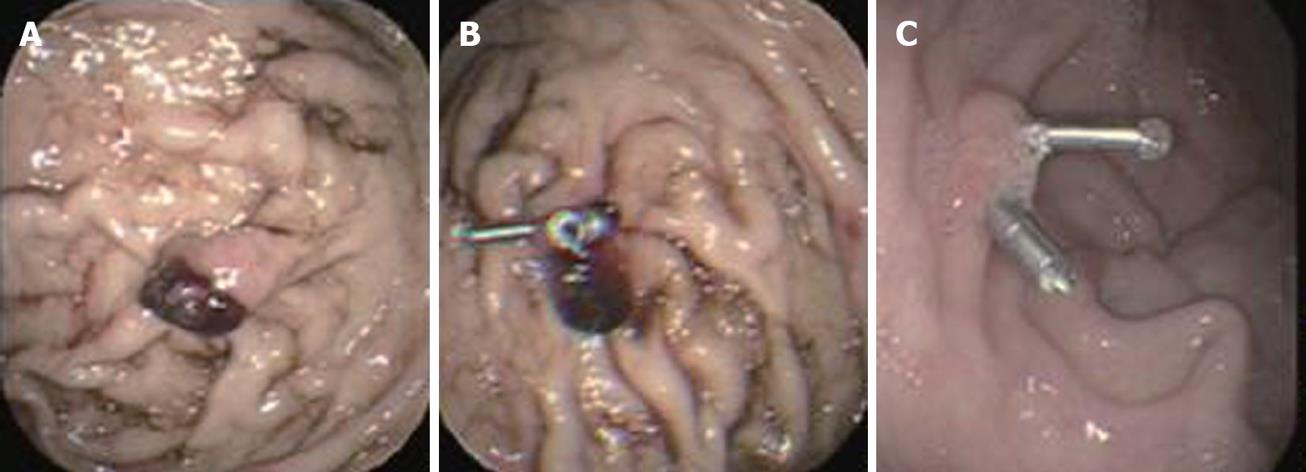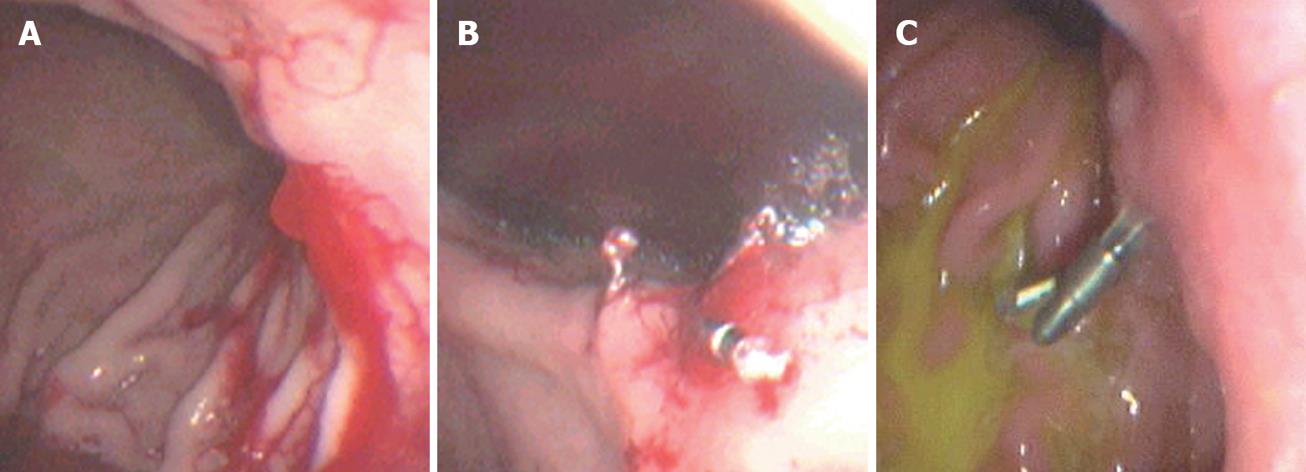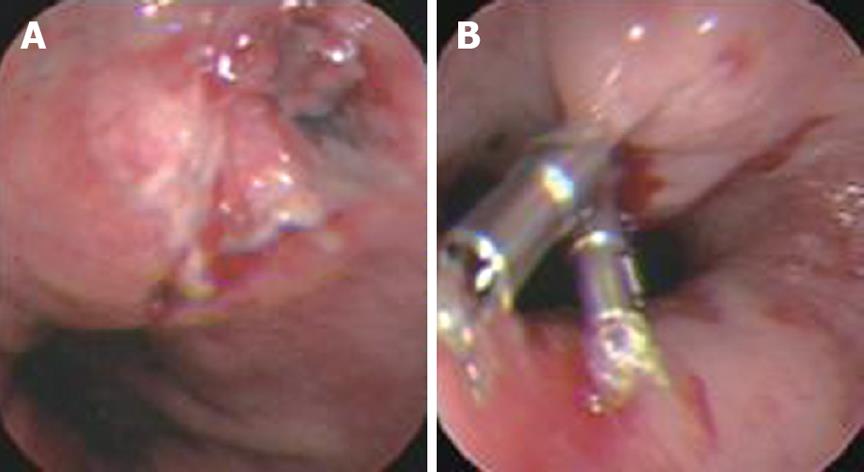Copyright
©2009 The WJG Press and Baishideng.
World J Gastroenterol. Sep 14, 2009; 15(34): 4322-4326
Published online Sep 14, 2009. doi: 10.3748/wjg.15.4322
Published online Sep 14, 2009. doi: 10.3748/wjg.15.4322
Figure 1 Endoscopic view of a Dieulafoy’s lesion before and after endoscopic hemoclipping.
A: Endoscopic view of a Dieulafoy’s lesion with a protruding vessel in the gastric fundus; B: Endoscopic view showing complete closure of the mucosal defect with a protruding vessel by hemoclips; C: Endoscopic view of the same patient three months later.
Figure 2 Endoscopic view of a Dieulafoy’s lesion before and after endoscopic hemoclipping.
A: Endoscopic view of a Dieulafoy’s lesion with active bleeding at the posterior wall of the proximal one third of the stomach. B: View after hemoclips application to bleeding site; bleeding has stopped. C: Endoscopic view of the same patient three months later.
Figure 3 Endoscopic view of a Mallory-Weiss tear at the esophagogastric junction before and after endoscopic hemoclipping.
A: Endoscopic view of a Mallory-Weiss tear at the esophagogastric junction with active bleeding; B: View after hemoclips application to bleeding vessel; bleeding has stopped.
- Citation: Guo SB, Gong AX, Leng J, Ma J, Ge LM. Application of endoscopic hemoclips for nonvariceal bleeding in the upper gastrointestinal tract. World J Gastroenterol 2009; 15(34): 4322-4326
- URL: https://www.wjgnet.com/1007-9327/full/v15/i34/4322.htm
- DOI: https://dx.doi.org/10.3748/wjg.15.4322











